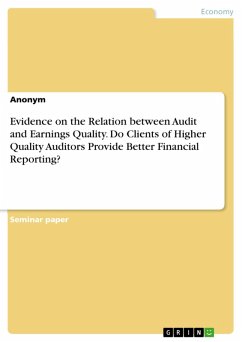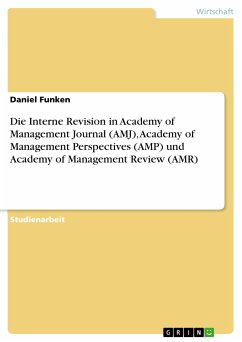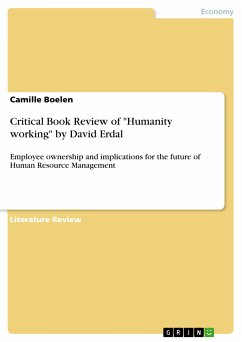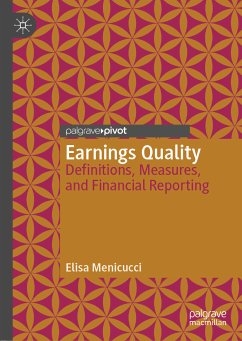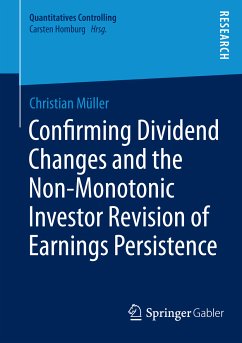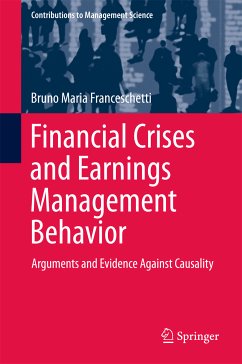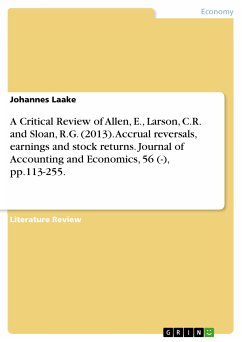
A Critical Review of Allen, E., Larson, C.R. and Sloan, R.G. (2013). Accrual reversals, earnings and stock returns. Journal of Accounting and Economics, 56 (-), pp.113-255. (eBook, PDF)

PAYBACK Punkte
0 °P sammeln!
Literature Review from the year 2016 in the subject Business economics - Investment and Finance, grade: 71, University of Westminster (Westminster Business School), language: English, abstract: Accounting numbers are supposed to be reliable and relevant. However, due to the use of accrual based accounting, reliability can be flawed. Accruals are used to make earnings more relevant than cash flows, hence they put every business transaction into the period in which they belong, but at the cost of reducing reliability. Furthermore, accruals can be used to increase or decrease earnings in one peri...
Literature Review from the year 2016 in the subject Business economics - Investment and Finance, grade: 71, University of Westminster (Westminster Business School), language: English, abstract: Accounting numbers are supposed to be reliable and relevant. However, due to the use of accrual based accounting, reliability can be flawed. Accruals are used to make earnings more relevant than cash flows, hence they put every business transaction into the period in which they belong, but at the cost of reducing reliability. Furthermore, accruals can be used to increase or decrease earnings in one period and if they are used correctly this variation will be reversed with following cash flows. These variations of earnings can have an impact on share prices and corporate decision making. Thus, Allen, Larson and Sloan (2013) investigate to what extent accruals are reversed and what impact they have on the stock market. First, this critical review will summarize the article, then it will critique data, methodology and findings before it finishes with a conclusion.
Dieser Download kann aus rechtlichen Gründen nur mit Rechnungsadresse in A, B, BG, CY, CZ, D, DK, EW, E, FIN, F, GR, HR, H, IRL, I, LT, L, LR, M, NL, PL, P, R, S, SLO, SK ausgeliefert werden.






